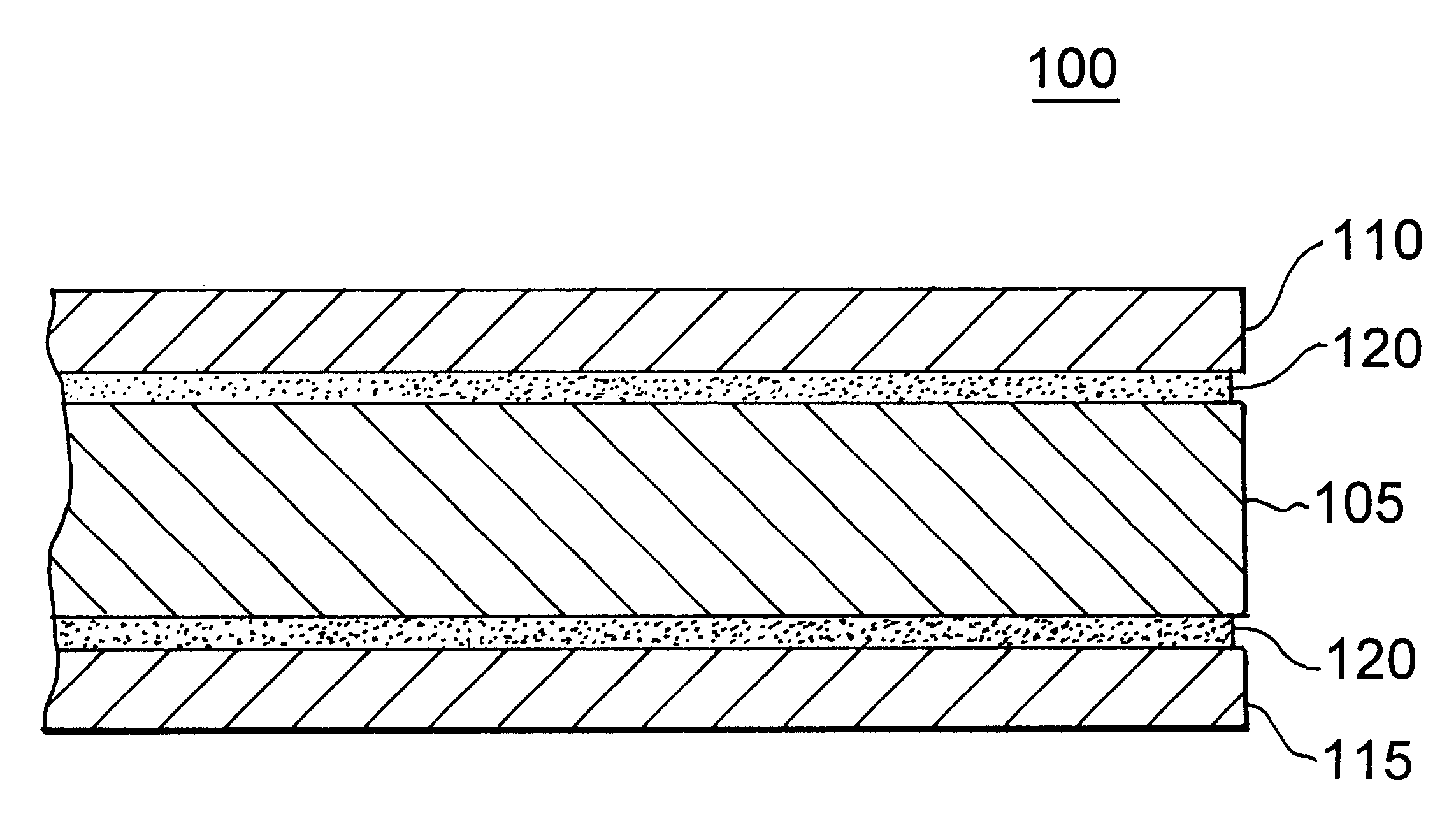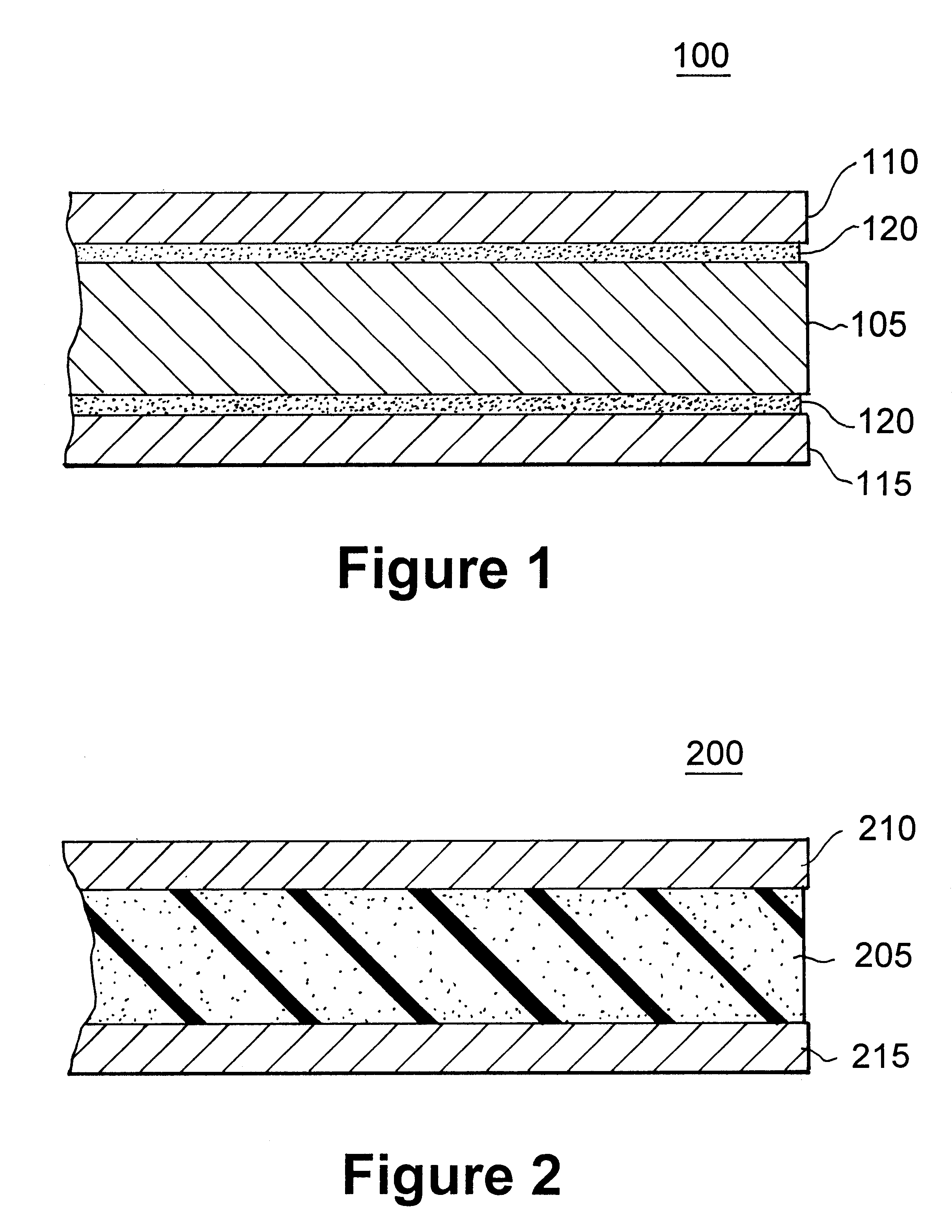Preservation mat board
- Summary
- Abstract
- Description
- Claims
- Application Information
AI Technical Summary
Problems solved by technology
Method used
Image
Examples
example 1
An adhesive containing about 80% polyvinyl acetate(PVAc) based adhesive emulsion, with about 20% polyvinyl alcohol (PVOH) standard laminating adhesive 100 parts by weight, a commercial hydrophobic zeolite between about 2 and 25 parts by weight, and, optionally, calcium carbonate about 2 parts by weight, were added as a dispersion in water with a surfactant in laminating together paper, layers to form a mat board. The dispersion contained about 70 parts calcium carbonate, about 0.5 parts Surfynol TG (manufactured by Air Products), and about 29.5 parts water. To form the archival mat board, an 80 gsm paper layer is coated with the adhesive composition at about 50 to 125 um wet thickness and wet laminated to a 1 mm thick middle board or layer comprising alpha cellulose that is acid and lignin free. This process is repeated on an opposite surface of the middle board with another 80 gsm paper layer. The laminate is allowed to dry at ambient conditions for at least 72 hours. Test results ...
example 2
Zeolites were introduced into a foam material during its manufacture and the amount of pollution was tested over a period of time. The foam contained Huntsman polystyrene general purpose grade having a melt index less than about 3, preferably about 1.5, Phillips GG petroleum isopentane about 3% to 6%, Boehringer & Ingelheim hydrocerol CF40 about 1 / 2% to 1%, Union Carbide type 4A zeolites about 0.5% to 10% having a particle size about 2 micron-8 and a pore size of about 4 angstroms, and mineral oil about 16 oz / 500 lbs as a binder. The polystyrene foam was manufactured using a Tandem, Single Screw Extruder about 41 / 2"-6" though a circular die which produces a tubular sectioned foam extrusion. Operating temperatures in the machine were set to about 420.degree. F. in the melting section and about 280.degree. F. in the cooling / mixing section, while the die pressure was set at 1200 lbs / sq. inch. The extrusion was slit to form a flat sheet about 3 / 16" thick and heat fused between two sheet...
PUM
| Property | Measurement | Unit |
|---|---|---|
| Fraction | aaaaa | aaaaa |
| Fraction | aaaaa | aaaaa |
| Fraction | aaaaa | aaaaa |
Abstract
Description
Claims
Application Information
 Login to View More
Login to View More - R&D
- Intellectual Property
- Life Sciences
- Materials
- Tech Scout
- Unparalleled Data Quality
- Higher Quality Content
- 60% Fewer Hallucinations
Browse by: Latest US Patents, China's latest patents, Technical Efficacy Thesaurus, Application Domain, Technology Topic, Popular Technical Reports.
© 2025 PatSnap. All rights reserved.Legal|Privacy policy|Modern Slavery Act Transparency Statement|Sitemap|About US| Contact US: help@patsnap.com


